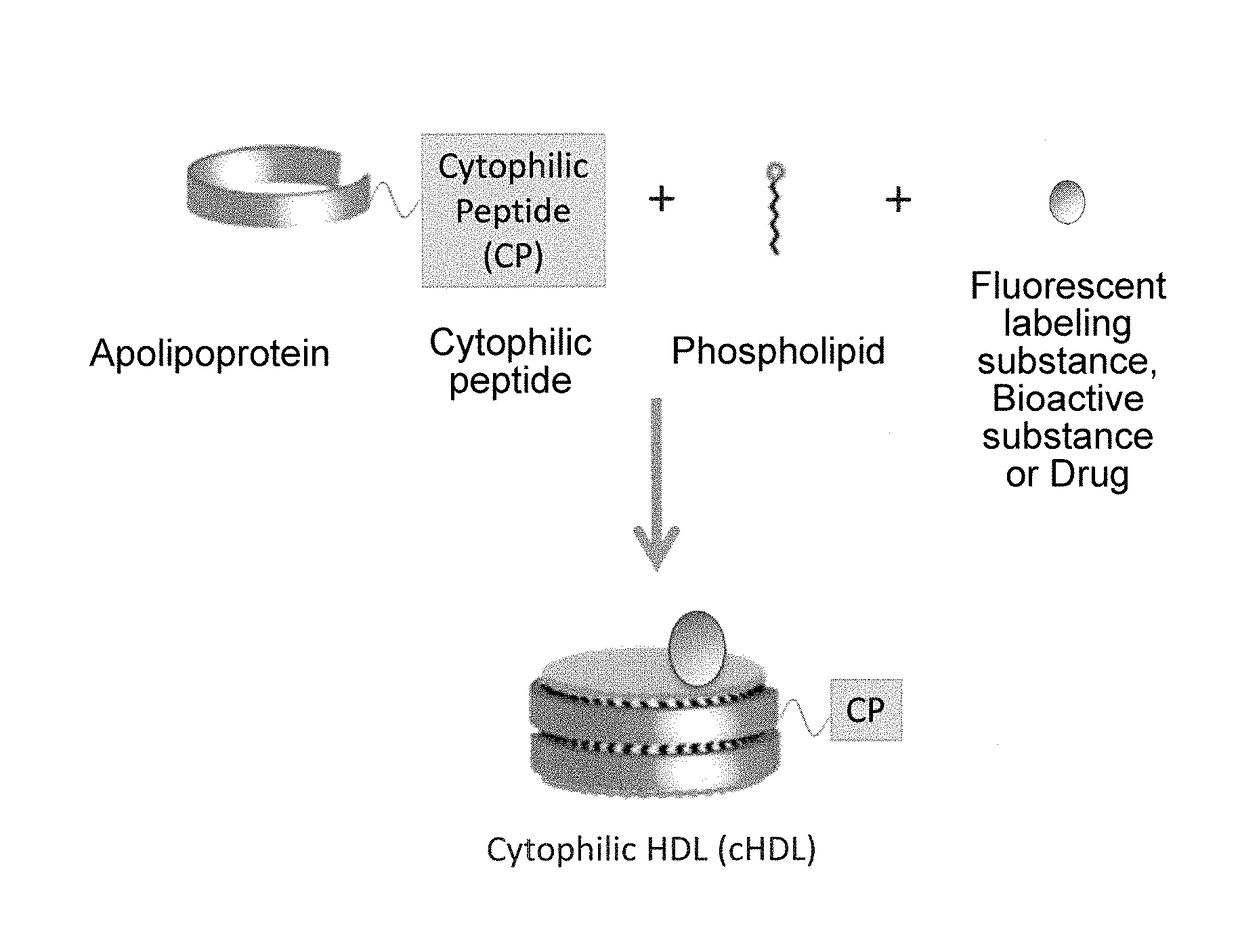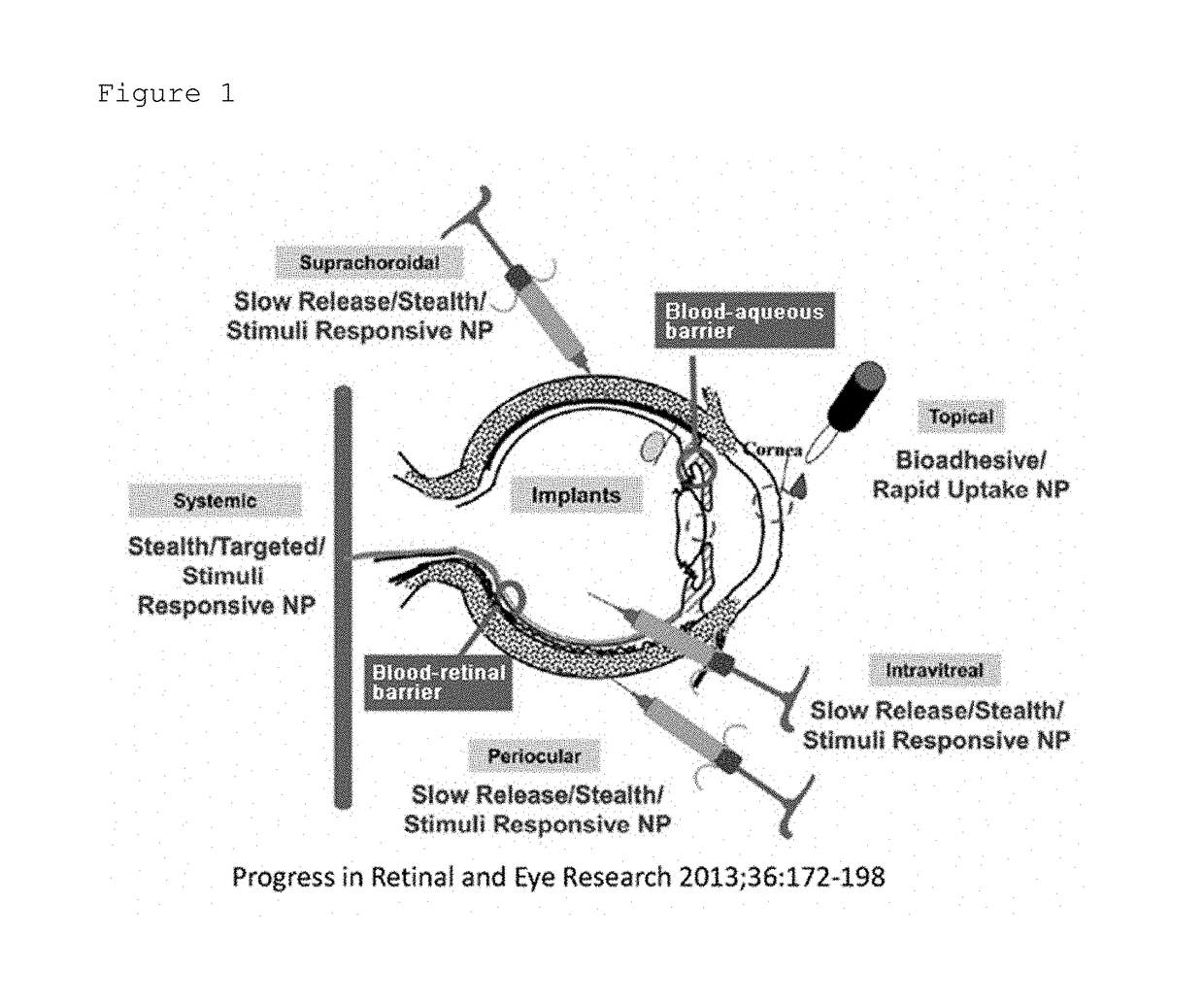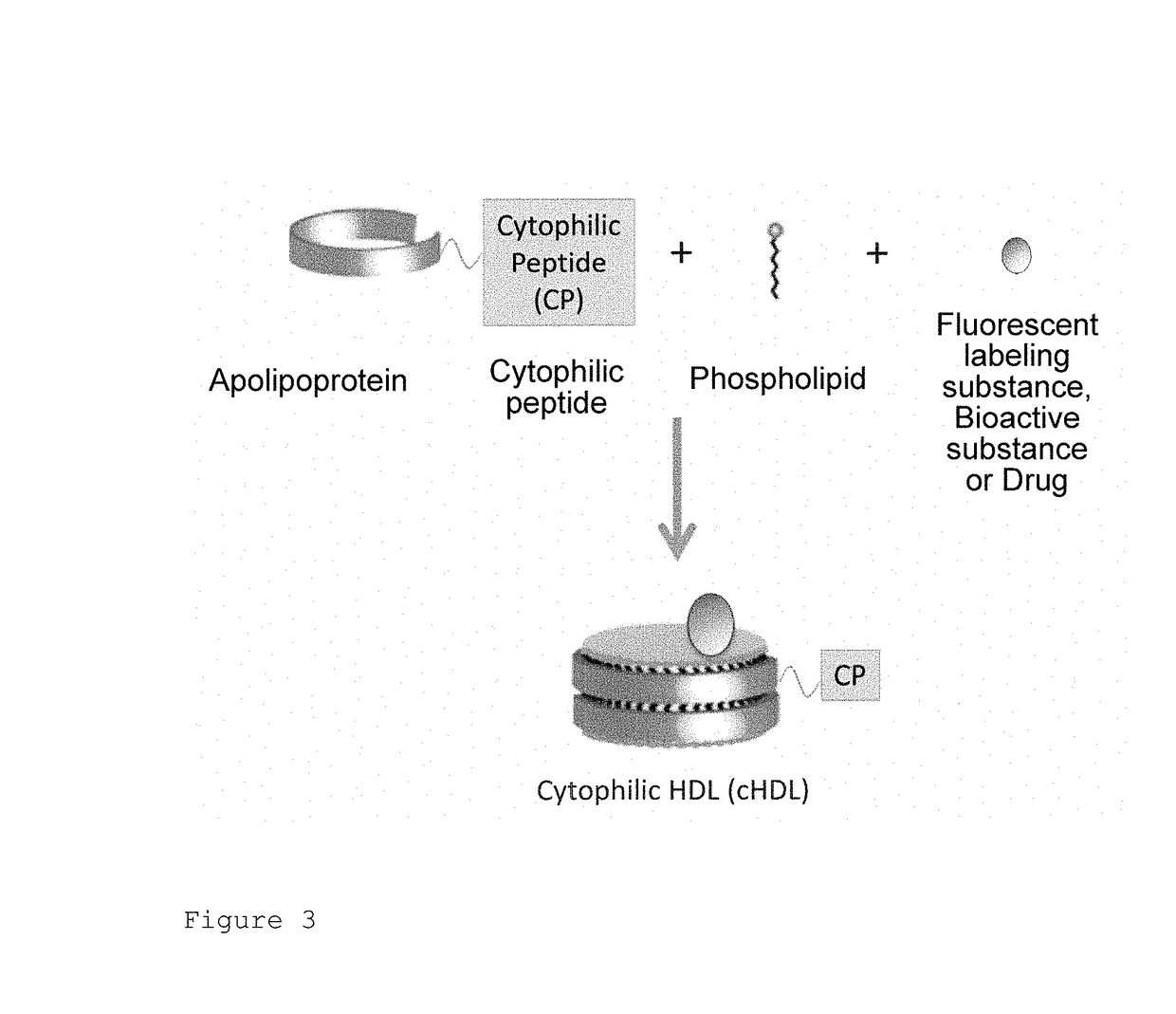High-density lipoprotein, and delivery of drug to posterior segment of eye by ocular instillation of said cytophilic peptide-fused high-density lipoprotein
a high-density lipoprotein, cytophilic peptide technology, applied in the direction of drug composition, peptides, metabolic disorders, etc., can solve the problems of cumbersome repetitive injection, difficult to deliver a drug, and the risk of endophthalmitis, so as to reduce the side effects of the drug, suppress the neovascularization, and improve the treatment effect
- Summary
- Abstract
- Description
- Claims
- Application Information
AI Technical Summary
Benefits of technology
Problems solved by technology
Method used
Image
Examples
example 1
[0132]A high-density lipoprotein (HDL) was prepared by the following method.
Preparation of Cytophilic HDL (cHDL)
[0133](Method)
[0134]A fusion protein was prepared by ligating a TAT (Trans-activator of transcription protein) peptide having a cytophilic property to the C terminal of genetically modified apoA-I. To the apoA-I fusion protein, a liposome composed of a phospholipid, i.e., dimistryl phosphatidylcholine (DMPC) and a fluorescent labeling substance, i.e., coumarin-6 and having a particle size as small as about 100 nm were mixed to prepare cHDL (Spontaneous interaction method). In order to remove an unreacted liposome, phospholipid micelle, and an apolipoprotein binding to neither the phospholipid nor a fluorescent substance, from the mixture of genetically modified apoA-I and the liposome, cHDL was purified by an ultracentrifugation method.
[0135]As a comparative control, recombinant HDL (rHDL) not containing TAT peptide was prepared in the same manner. As a comparative control...
example 2
[0139]Next, a membrane toxicity test using individual HDLs produced was carried out.
Toxicity Evaluation of cHDL
[0140](Method)
[0141]A cytotoxicity test using the human cornea cultured-cells was carried out in order to examine corneal toxicity of individual HDLs obtained. The test was carried out for cHDL, rHDL and a comparative control, benzalkonium chloride by a colorimetry method for measuring enzyme activity. CCK-8 test using CCK-8 (Cell Counting Kit-8) as a detection reagent was adopted.
[0142](Results)
[0143]Both cHDL and rHDL showed cell viabilities, which were the equal to or higher than that of a negative control (typical example), i.e., an HBSS / HEPES solution, and showed cytotoxicities, which were significantly lower than that of a positive control (typical example), i.e., benzalkonium chloride (a preservative contained in commercially available eye-drops) (FIG. 3).
example 3
[0144]Efficiency of the cHDLs obtained in reaching the retina was examined.
Efficiency of cHDLs in Reaching the Retina
[0145](Method)
[0146]Mice C57 / B6 were used as an experimental animal. Each drop (3 μL) of cHDL, rHDL or DSPC liposome of 100 nm in particle size, each containing a coumarin-6 concentration of 0.1 μmoL / mL was placed in an eye surface of a mouse. Thirty(30) minutes later, the eyeball was removed, frozen and then sliced to obtain a frozen specimen. The retina of the frozen specimen was observed and the fluorescence intensity of the retinal inner layer was observed by a confocal microscope. The results were compared.
[0147](Results)
[0148]In the observation by a confocal microscope, fluorescence, which was not observed in a coumarin-6-free HBSS / HEPES buffer ocular instillation group, was observed in the retinal inner layer in the cHDL ocular instillation group (FIG. 4).
[0149]These fluorescence intensity results with respect to cHDL, rHDL, the HBSS / HPES solution as a negative...
PUM
| Property | Measurement | Unit |
|---|---|---|
| diameter | aaaaa | aaaaa |
| size | aaaaa | aaaaa |
| size | aaaaa | aaaaa |
Abstract
Description
Claims
Application Information
 Login to View More
Login to View More - R&D
- Intellectual Property
- Life Sciences
- Materials
- Tech Scout
- Unparalleled Data Quality
- Higher Quality Content
- 60% Fewer Hallucinations
Browse by: Latest US Patents, China's latest patents, Technical Efficacy Thesaurus, Application Domain, Technology Topic, Popular Technical Reports.
© 2025 PatSnap. All rights reserved.Legal|Privacy policy|Modern Slavery Act Transparency Statement|Sitemap|About US| Contact US: help@patsnap.com



